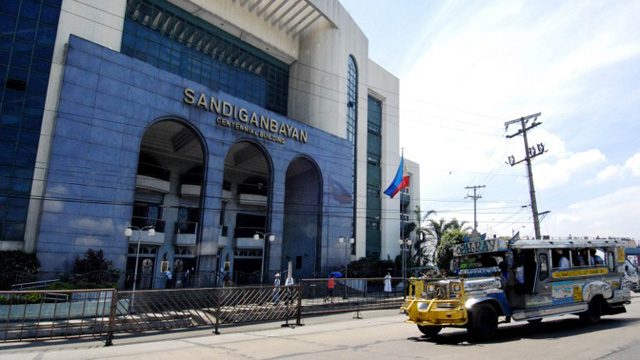SUMMARY
This is AI generated summarization, which may have errors. For context, always refer to the full article.

MANILA, Philippines – The long wait is over.
President Benigno “Noynoy” Aquino III appointed on Monday, June 23, a new anti-graft court justice to fill in the vacancy in the Sandiganbayan’s 5th division.
Aquino’s appointment of Manila Regional Trial Court Judge Ma Theresa Gomez-Estoesta to the Sandiganbayan came barely 3 days after Chief Justice Maria Lourdes Sereno rebuffed Malacañang for asking the Judicial and Bar Council (JBC) to revisit the list it had submitted to the Office of the President in February 2014.
The appointment also comes as the anti-graft court deals with all sorts of pressures in connection with the pork scam cases involving top lawmakers. (READ: Editorial cartoon: Stress, squeeze play and the anti-graft court)
Estoesta’s division in the Sandiganbayan is handling the plunder and graft cases against Senator Jose “Jinggoy” Estrada, who was detained on Monday at Camp Crame.
Aquino earlier drew flak for failing to appoint the new Sandiganbayan justice within the constitutionally prescribed 90-day deadline.
Estoesta got 4 votes from the 6-member JBC when the council submitted its shortlist to the President in February. Below is the shortlist of nominees to the position and their corresponding number of votes from JBC members:
Corpus-Mañalac, Maryanne E. – 6 votes
Fernandez, Bernelito R. – 6 votes
Martin, Ronaldo B. – 5 votes
Paras, Ricardo III V. – 5 votes
Soriano, Andres B. – 5 votes
Armamento, Leah Tanodra – 4 votes
Gomez-Estoesta, Ma Theresa Dolores C. – 4 votes
Guillen, Marissa Macaraig – 4 votes
Outstanding judge
Before her stint at the Manila RTC, Estoesta served in the solicitor general’s office from 1991 to 2002.
She obtained her degrees in political science and law from De La Salle University and Ateneo de Manila University, respectively, according to a Malacañang statement.
In 2005, she was judged most outstanding judge for first-level courts in the Supreme Court’s search for judicial excellence. In 2012, she also received the Chief Justice Cayetano Arellano award as most outstanding judge for second-level courts.
The vacancy was triggered by the promotion last year of Justice Amparo Cabotaje-Tang to presiding justice of the anti-graft court.
But the President took time in choosing her replacement.
In a letter addressed to Executive Secretary Paquito Ochoa Jr on Friday, June 20, Sereno noted that Ochoa asked the council to revisit the list it submitted to Malacañang on February 28, 2014. The list contains at least 3 names that the President can choose from in appointing a new justice to the anti-graft court.
Ochoa made the request only on Thursday, June 19, long after the 90-day deadline for the appointment had lapsed. The law says Malacañang has to choose from the JBC shortlist within 90 days from the day the council submitted its nominees to the President. In this case, the list was submitted nearly 4 months ago, more than 90 days, on February 28, 2014.
The Sandiganbayan was first conceptualized when the country was put under martial rule by then president Ferdinand Marcos. It was created via Presidential Decree 1486 in June 1978, as provided for by the 1973 Constitution, which called for the creation of a special court that would deal exclusively with corruption cases against government officials and employees. (READ: Get to know the Sandiganbayan). – Rappler.com
Add a comment
How does this make you feel?
There are no comments yet. Add your comment to start the conversation.